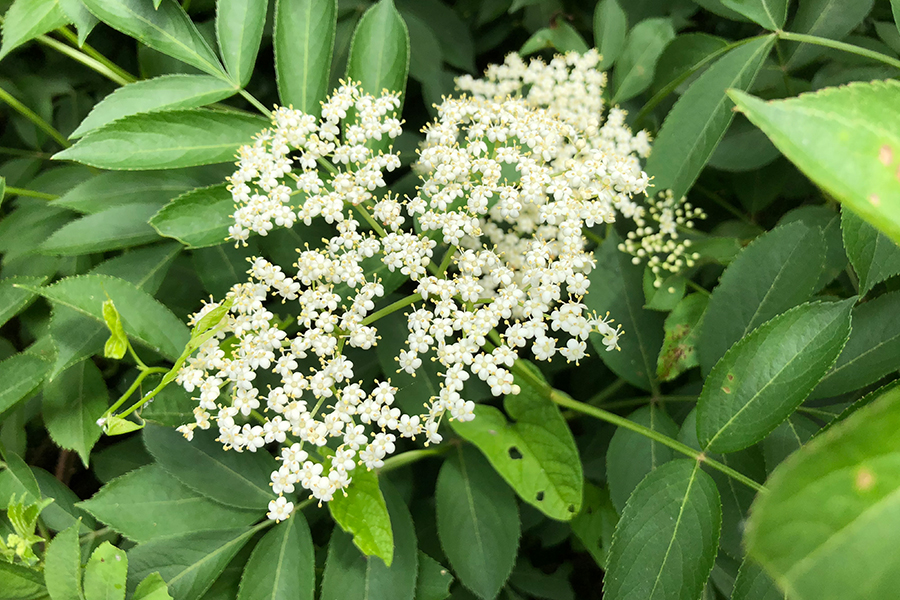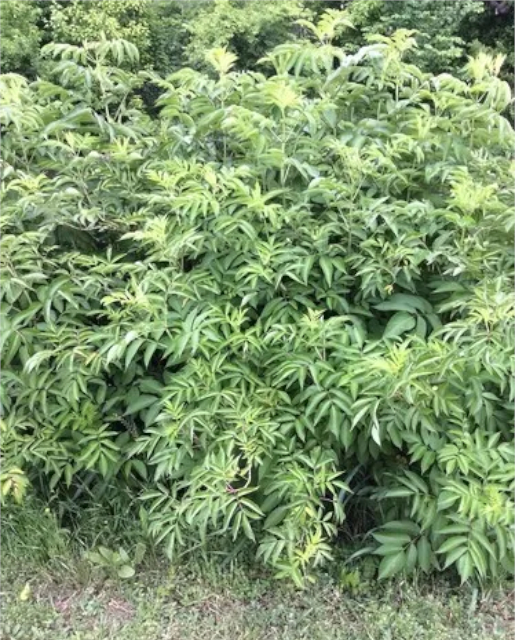Sambucus canadensis
American black elderberry, widely distributed across the Americas, produces clusters of black or purple berries in late summer known to have health benefits.
Location
The Elderberry Trail was named after the American black elderberry that can be discovered along it. See whether you can find two of them nestled near to one another as you curve around the bends in this trail. Though we have six in total, four of them can be found in this part of the arboretum!


History at Hadwen
The American black elderberry was growing on Hadwen’s estate at least as early as 1882 along with American red elderberry (Sambucus pubens).
Keep Learning
Detailed Species Information
The American black elderberry is a species of elderberry in the family Adoxaceae native to the Americas east of the Rocky Mountains and as far south as Brazil. It can grow up to 12 feet (3.6 meters) in height. The leaves are pinnately compound with five to nine leaflets. The flowers are white and bloom in large clusters from May to June, followed by drooping clusters of small black or purple berries in late summer. The American black elderberry is tolerant of both dry and wet conditions but prefers full sun. The fruit produced by American black elderberry is an important food source for many bird species and deer. The flowers are high in pollen and important to a variety of pollinators.
The American black elderberry is used in traditional medicine as a pain reliever due to its anti-inflammatory effects, although many parts of the plant are highly toxic. When ripe, the fruits can also used in the production of jams, jellies, and other food products.
